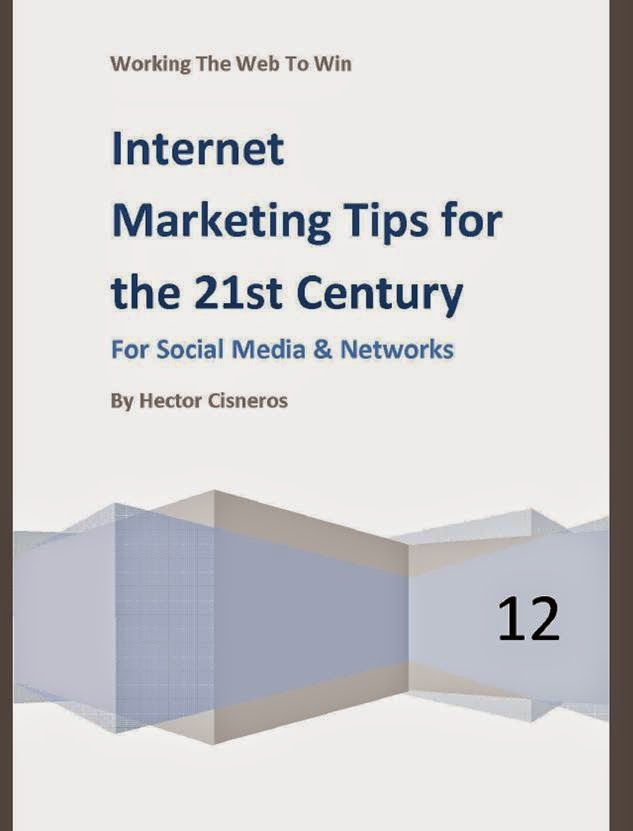great is the fact that our populace has always had its dreamers, tinkerers and inventors. The Internet itself is proof positive of the power of American ingenuity. There are millions of people with great ideas for new products and services. There’s a big difference between drawing an idea on a napkin versus actually bringing your invention or idea to fruition in the marketplace. This week we’ll discuss how budding inventors can use the World Wide Web to become a successful entrepreneur. We’ll discuss everything from angel investors, to Crowdfunding, to online marketing and more. This article will cover all the bases so you can hitch your wagon to the online money train. Our corresponding Internet shows will have guests who are experienced in raising money, who offer inventor's resources, or who have made it to the big time online with their innovative products or services.
Sometimes people forget the Internet as we know it is not quite 20-years old yet. In fact, back in 1994, there were only around 10,000 websites. Fast forward to 2014: more than 130,000 websites will be launched… and that’s just today. This gives you an idea of the exponential online growth that’s occurred in the past decade. Many of the sites that grace the Internet are business-related, making the World Wide Web the ultimate destination for established businesses and startups alike. But what’s even more incredible is when it comes to either boot strapping or building a business, there’s no single entity on the planet that’s more useful than the Internet. Allow me to count the ways:
 1. Business Funding – Back in ’94, there were only a few methods most entrepreneurs could use to find the financial backing to get a new venture going. They dipped into their own savings, borrowed from friends or family, or dug a hole in their credit cards and prayed they could get their investment back before interest rates ate them alive. (Take it from me, since I self-funded my first Internet business. This latter method is not for the faint of heart.)
1. Business Funding – Back in ’94, there were only a few methods most entrepreneurs could use to find the financial backing to get a new venture going. They dipped into their own savings, borrowed from friends or family, or dug a hole in their credit cards and prayed they could get their investment back before interest rates ate them alive. (Take it from me, since I self-funded my first Internet business. This latter method is not for the faint of heart.)Today’s tinkerers, dreamers and entrepreneurs can secure start-up funding at the click of a mouse by looking at Crowdfunding sites such as Kickstarter, Indiegogo and RocketHub, among others. The best part about these sites is they not only offer to help you start your business, but they do so without requiring you to give up any equity in your firm, or in some cases, even require you to pay back the investors. What a deal!
This form of funding has become so popular that there are now books and online video tutorials that show you, step-by-step, how to get Crowdfunding to work for you. An article by “Entrepreneur Magazine” entitled, “10 Top Crowdfunding Websites,” details the variety and scope of the industry.
In her book Cash From the Crowd, Sally Outlaw, founder and CEO of Crowdfunding website peerbackers, reveals the secrets of funding your business with help from colleagues, peers, family, friends and even perfect strangers through a Crowdfunding campaign. http://www.entrepreneur.com/article/228534#
2. Business Models – Before the advent of the Internet, there were really only two viable business models from which to choose: Brick & Mortar or Mail Order. Both of these models were expensive to instigate, own and operate. The Brick & Mortar model necessitated scouting a location, site build out, purchasing inventory, furnishing and stocking the shelves, etc. And all of which could take months, not to mention tens of thousands of dollars, to accomplish. Keep in mind all of this had to occur before you opened your doors for business. Even today, this is a high-risk way to go into business.

The Mail-order model, while eliminating the overhead associated with a Brick & Mortar, wasn’t without its own perils. Back then, this business model required an entrepreneur to purchase and warehouse inventory, and then print and snail mail to tens or even hundreds of thousands of catalogs in the hopes of generating sales. While some businesses today still use this model, more and more mail order ventures rely on the Internet to showcase their wares and process orders electronically. This not only saves time and money, but it saves a whole lot of trees as well.
3. Business Promoting – In ’94 there were three primary methods to promote your venture: Print, Radio and TV. None of these models were particularly user- friendly or cheap. Usually, in most towns, there was only a single newspaper and a handful of broadcast stations. This gave the owners of the newspapers, magazines, radio and TV stations the ability to charge whatever the market would bear, thus pricing many would-be entrepreneurs out of the market before they could even get off the ground.
 Then along came the Internet and sites such as Craigslist, eBay, Amazon and YouTube were born that gave startups a whole new lease on life. Not only have these portals become a success, they've become so successful that they actually threaten the viability of their more traditional counterparts. (Craigslist has been cited as one of the prime reasons the newspaper industry has been in sharp decline, since the site offers classified advertising at low or even no cost.)
Then along came the Internet and sites such as Craigslist, eBay, Amazon and YouTube were born that gave startups a whole new lease on life. Not only have these portals become a success, they've become so successful that they actually threaten the viability of their more traditional counterparts. (Craigslist has been cited as one of the prime reasons the newspaper industry has been in sharp decline, since the site offers classified advertising at low or even no cost.)For small businesses, the advent of these and other websites have not only meant the difference between life and death, it means entrepreneurs now have a way to cost-effectively test and refine their business models. With the availability of blogs, social networking, podcasting and video portals, which offer much of the same things as traditional print and broadcasting venues — only for free — now small businesses have a much better chance of creating a sustainable revenue since promotional expenses are much less than they were 20 years ago.
4. Business Staffing – Hiring personnel is still something that causes many business owners to wake up in a cold sweat in the dead of night. The costs associated with hiring, training, supporting and creating/equipping workstations for employees can be a daunting task for any business, let alone a startup with limited resources. Back in ’94, with the exception of temps, there was little a business owner could do to contain the costs associated with hiring new employees. Then along came outsourcing and the world became a business owner’s oyster. Today, most businesses take advantage to outsource many tasks, from HR, to customer service, to IT, to clerical services, to bookkeeping, and even editorial functions.
| Staffing structure pyramid (Photo credit: Wikipedia) |
Love it or hate it, outsourcing is a resource most small businesses could least afford to do without today. Besides, in our current business environment, it isn't always necessary to take your outsourcing needs offshore. In our current business, we use a number of US-based independent contractors for everything from web design, to writing and editing tasks, to on-screen talent and more. It’s been my experience that employing outsourced labor in the short term results in hiring a qualified full-time employee down the road. In many cases, this can mean hiring the same person that was employed as an indie. (Think of his/her outsourcing tenure as an “audition.”) Even better, it allows business owners the flexibility of generating occasional jobs for hire that can add to the bottom line without threatening the business’ viability.
| Seal of the U.S. government's Small Business Administration. (Photo credit: Wikipedia) |
There comes a time in every growing business when, as the owner, you "come to the end of your sleeve." Your business reaches capacity. Either your business has surpassed your skill set or your capacity, or both.
http://www.huffingtonpost.com/jackie-nagel/are-service-providers-slo_b_5326132.html
What happens when you realize you've taken your business to the point where your acumen is no longer sufficient to take it to the next level? It used to mean incurring the expense of hiring high-priced consultants or employees that were a drain on the business. Today, that’s no longer an issue, since there are a number of business assets online that can provide the knowledge you seek. Or you can acquire outsourced technical experts on a per-hour or per-project basis.
6. The Business Sale – The best reason to own a business is to be able to sell the business down the road. In the past, this meant hiring a business broker and paying a percentage of the sale price to a third party. While I’m not saying business brokers don’t have their place when it comes to selling a business, they’re no longer the only way to go. Just as the real estate industry has spawned a For Sale By Owner (FSBO) craze, there are a number of web portals that have sprung up whose primary task is to help business owners sell their firms.
| For Sale (Photo credit: Ian Muttoo) |
http://www.entrepreneur.com/article/186692
Sporting names such as bizbuysell.com, BizQuest.com, businessforsale.com, globalbx.com and sellingyourbusiness.com, these sites can help you price, position, and sell your business, since they cater to business owners and buyers galore. More importantly, even if you do end up dealing with a broker to sell your business, you’ll be a much savvier seller who better understands the process. That’s money in the bank.
The bottom line is, no matter what stage of business you’re currently engaged in, when it comes to starting, funding, promoting, staffing, sustaining or selling a business, the Internet is your Ultimate Innovation Station.
 In this article, I’ve covered how the Internet is helping entrepreneurs flourish in the 21st century. It includes discussions on six important elements that every business, especially startups, must deal with in order to grow and become profitable. I’ve provided details and links to many resources and information that explains how entrepreneurs can use these six elements to succeed.
In this article, I’ve covered how the Internet is helping entrepreneurs flourish in the 21st century. It includes discussions on six important elements that every business, especially startups, must deal with in order to grow and become profitable. I’ve provided details and links to many resources and information that explains how entrepreneurs can use these six elements to succeed.If you like this article, you can find more by typing “innovation" and "Internet” in the search box at the top left of this blog.
Carl Weiss is CEO of Working the Web to Win, a digital marketing agency in Jacksonville, Florida. You can interface with Carl every Tuesday at 4 p.m. Eastern when he airs his radio show on Blog Talk Radio.















Great post . It takes me almost half an hour to read the whole post. Definitely this one of the informative and useful post to me. Thanks for the share and plz visit my site Offshore outsourcing 21st and century provide offshore outsourcing service, freelance service, personal assistant,web development, customer service, marketing services.
ReplyDeleteNo wonder some of their posts from months ago are STILL generating listeners and followers. Carl and Hector know their stuff.
ReplyDelete